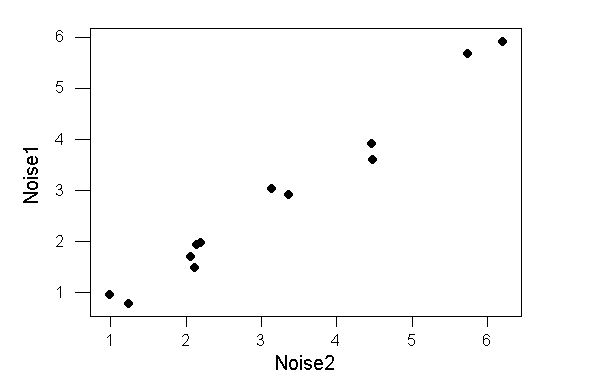

In python, Numpy library provides corrcoef() function to calculate the correlation between two variables.Ĭorrcoef() a function that returns a matrix of correlations of x with x, x with y, y with x, and y with y.
#POSITIVE CORRELATION SCATTER PLOT INSTALL#
I hope that this post has helped a bit and I look forward to seeing your questions below.If you don’t have numpy package installed on your system, installed it using the below commands on the window system pip install numpy The relationship is numerically represented by the correlation coefficient and the coefficient of determination. The relationship can vary as positive, negative, or zero. This map allows you to see the relationship that exists between the two variables. Scatter plots are a method of mapping one variable compared to another. The closer the value is to the absolute value of 1, the stronger the correlation is.

The coefficient of determination, r 2, gives you an impression of how much of the variation in X explains the variation in Y.īoth r and r 2 vary between -1.0 and +1.0. The correlation coefficient, r, represents the comparison of the variance of X to the variance of Y. To determine the strength of the correlation, the correlation coefficient is best. Now, I been using the word ‘slope’ to refer to the line of best fit, but that does not really tell you the strength of the correlation. The log of a brain protein shows a zero correlation with intra vein size, as you can see belowīiomarkers and echocardiography Coefficient of Determination In this case, the value of the slope of the line of best fit would be very close to zero. This usually implies that the two variables are unrelated. This means that the pattern has no discernible pattern. Zero correlation is also referred to as no correlation. The amount of vitamin C in cabbage shows a negative relationship to head size. This means that the slope of the line of best fit has a negative slope. This kind of pattern can also be referred to as an indirect relationship. Negative correlations, you guessed it, have a generally downward trend in the scatter plot. It also means that the line of best fit has a positive slope. Your urea plot is an example of positive correlation. Sometimes positive correlation is referred to as a direct correlation. Positive correlation is when the scatter plot takes a generally upward trend. There are three ways that data can correlate: positive, negative, and zero. You have already identified a pattern known as correlation. If you were to this for a collection of measurements, you get something that looks a little like thisĪlready, you can spot that the data seems to follow the general pattern that as osmotic pressure of the bladder continues, the amount of urea increases as well. When we decide that one variable is X and the other is Y, we map the data along a Cartesian plane. Or say that you want to identify the relationship between the amount of urea in urine and the water pressure of someone’s bladder – see, statistics isn’t limited to math and the social sciences lol. In this case, the variables are paired by person. You do this because you have some sort of logical reason for connecting the two variables to look for a relationship between them.įor example, let’s say that you are measuring a person’s weight and the amount of water that they drink. This means that it is a map of two variables (typically labeled as X and Y) that are paired with each other. Scatter PlotsĪ scatter plot is a map of a bivariate distribution. You can identify basic patterns using a scatter plot and correlation. But before you use any of these tools, you should look for basic patterns. To look for patterns, there are several statistical tools that help identify these patterns. The hard part is finding patterns that fit the data. In statistics, you deal with a lot of data. By John Clark on Apin Descriptive Statistics, Statistics Basics


 0 kommentar(er)
0 kommentar(er)
